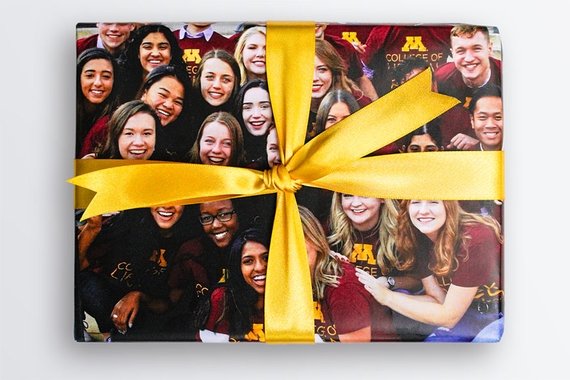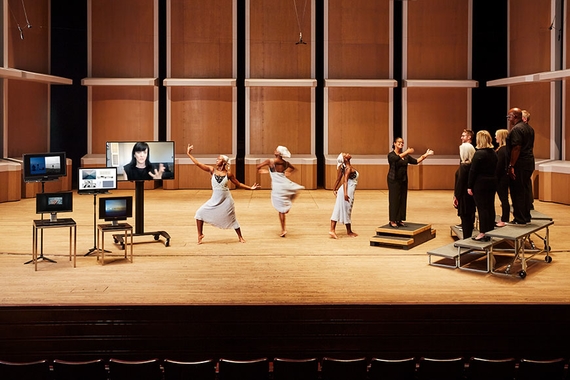Preserving Culture in Times of Crisis and Change
Soil, seeds, and stories. With them, the Healing Roots team is transforming the Cedar Riverside Plaza landscape and community. And as wildlife-friendly plants and rain gardens replace traditional turf, the stories of the neighborhood’s immigrant elders are being recorded and honored, leading to new knowledge.
Riverside Towers is home to generations of East African families—including those with grandchildren who are now students at the adjacent University of Minnesota. Part of the new Liberal Arts Engagement Hub Residency program, Healing Roots is a collaboration between Metro Blooms, the Backyard Phenology Project, and community leaders to build pathways to careers in green infrastructure.
“Some of the elders were farmers in their community of origin and this was really the first time that they were able to literally dig in,” says Rebecca Rice, executive director of Metro Blooms, which partners with communities to create resilient landscapes and foster clean watersheds. “That’s why they’re very excited about the project, what it is doing ecologically, and how they can participate in learning about the ecosystem and the land here.”
Cross-cultural storytelling is key. “At a community event, our landscape architect was explaining that the first inch of runoff is the most polluted, so if we can capture that first inch in a rain event, we’ll capture most of the pollution. One of the community women spoke up and said, ‘Oh, we know what that is, we know not to drink from the well after the first rain; you have to wait until the second rain.’ She already knew what we were talking about.”
“Students and community partners have a powerful voice in this collaboration. When we listen to elders and people who have other cultural knowledge and ways of knowing, we are engaged in a more creative way than just standing out there with a clipboard,” says Christine Baeumler, art professor and co-founder of Backyard Phenology, a partnership in which scientists, artists, researchers, and Indigenous knowledge-keepers use a storytelling/citizen-science approach to connect communities to the natural world.
Having young adults equitably compensated to take leadership in defining and implementing the project also indicates success. “This work builds toward communities creating green infrastructure with access to good-paying jobs in a green economy filled by a very diverse workforce,” says Rice.
“Team members are equipping themselves to become policymakers and government leaders,” adds Baeumler. “Their actions will make a difference. In the future, hopefully, we’ll be seeing more birds coming back into our neighborhoods, the water will be cleaner. I won’t be looking out my window and literally seeing smoke on the other side of the tree line.”
Team Members and Community Partners
The Healing Roots team members are: Lilah White, engagement project manager; Fernanda Acosta, engagement support; Nadia Alsadi, GreenCorps member
Community partners are: Weli Hassan, executive director, Riverside Tenants Association; Eddy Olson-Enamorado, intern, COPAL; Leslee Gutierrez, environmental justice organizer, COPAL; Brett Ramey, independent consultant; Jacqueline Nguyen, project artist
Additional Backyard Phenology team members are: Professor Rebecca Montgomery, UMN Department of Forest Resources; Beth Mercer Taylor, sustainability education coordinator, UMN



